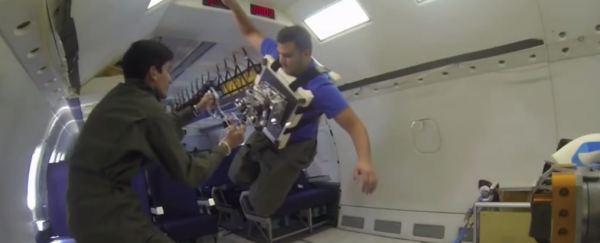NASA researchers have developed and tested a robotic gripping tool with an adhesive surface, inspired by the super-cling ability of gecko feet, which could be used to clean up space debris.
According to the US Space Surveillance Network, which tracks, identifies and catalogues manmade objects in space, there are more than 21,000 pieces of debris larger than 10 centimetres (or 3.9 inches) in orbit.
"Orbital debris is a serious risk to spacecraft, including the International Space Station," said lead investigator Aaron Parness, a robotics researcher at NASA's Jet Propulsion Lab in California. "This is definitely a problem we're going to have to deal with."
The new gripping device – which researchers hope will be part of the solution – was inspired by geckos.
These small lizards have branching arrays of microscopic bristles, or setae, on their feet, the smallest of which are hundreds of times thinner than a human hair.
These bristles can conform and adhere to all kinds of rough surfaces without using a lot of force. This gives geckos an uncanny ability to climb and cling to vertical and upside down surfaces. Watch: space age reptiles.
The adhesive pad on NASA's "gecko gripper" device has synthetic hairs called stalks, which are wedge-shaped and have a slanted, mushroom-shaped cap. When the gripping pad lightly touches part of an object, only the very tips of the hairs make contact with that surface.
"To get the gripper to stick to a surface, force is applied to the adhesive pad material in a manner that makes the hairs bend. This increases the real area of contact between the hairs and the surface, which corresponds to greater adhesion," explains the NASA press release. "When the force is relaxed and the hairs go back to being upright, this process turns off the stickiness."
It's basically like having super glue that can be turned off and on like a switch.
This temporary adhesive force employed by geckos and the NASA gripper system can be explained by a phenomenon known as van der Waals force.
This is the sum of the attractive or repulsive forces between molecules. Essentially, in this instance, adhesion occurs because electrons orbiting the nuclei of atoms are not evenly spaced, which creates a slight electrical charge.
"The reliability of van der Waals forces, even in severe environments, makes them particularly useful for space applications," says Parness.
"The system could grapple objects in space that are spinning or tumbling, and would otherwise be hard to target," he says.
Here's NASA testing their "gecko gripper" device during brief periods of weightlessness aboard their C-9B parabolic flight aircraft in August:
In one clip, the gripping device can be seen adhering to, and grappling, a 250-pound man wearing a vest made from spacecraft materials.
Although members of the research team held the device with adhesive pads during the test, the eventual idea is to incorporate the grippers into a robotic arm or leg. To date, the gripping device has been tested on more than 30 spacecraft materials, and inside a vacuum chamber replicating the conditions extreme conditions of space.
The gecko has been a bountiful source of inspiration for roboticists and materials scientists for everything from self-cleaning tape, to gloves that could enable soldiers in combat to scale walls.
Source: NASA
